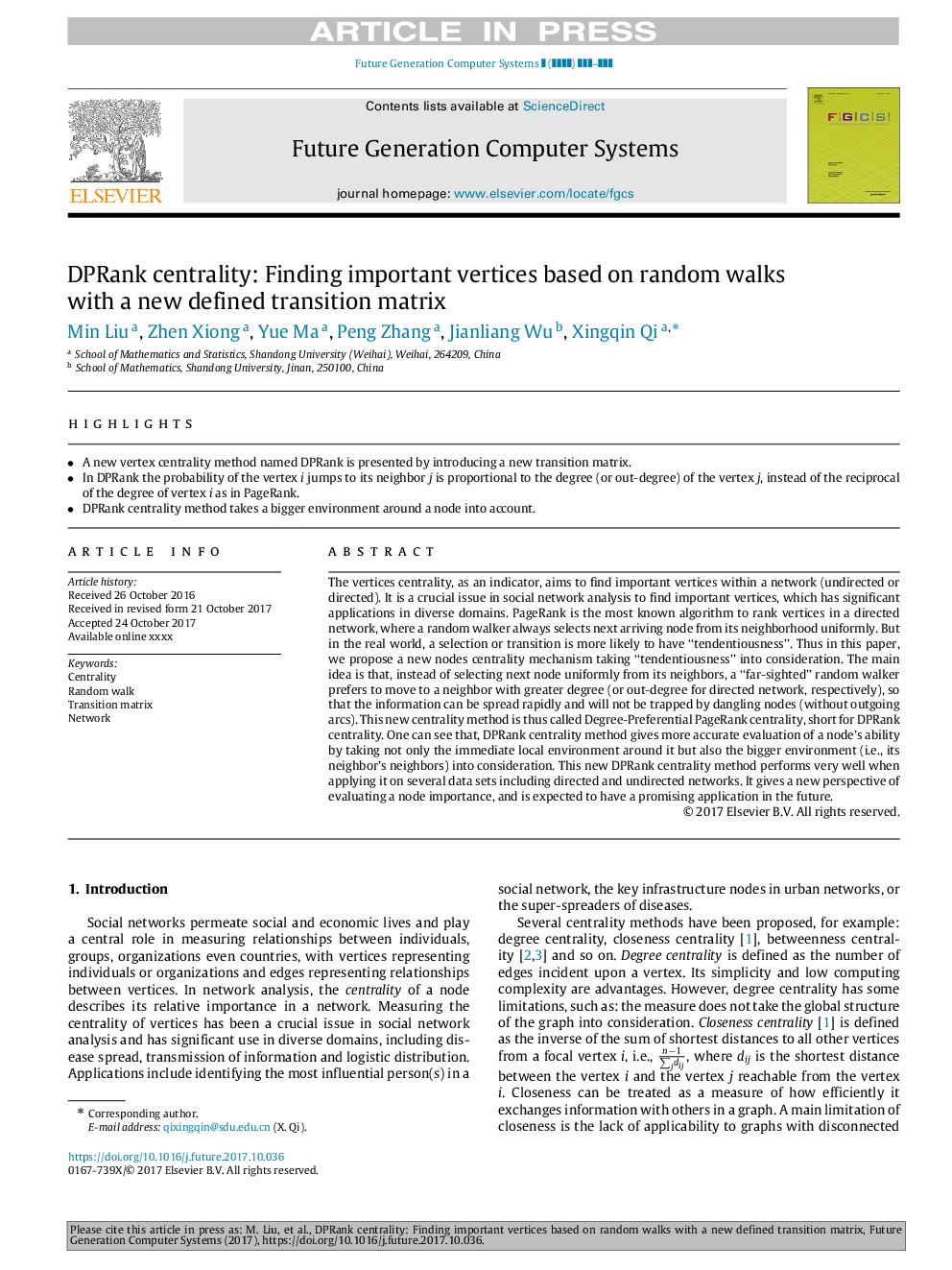| Article ID | Journal | Published Year | Pages | File Type |
|---|---|---|---|---|
| 6873158 | Future Generation Computer Systems | 2018 | 14 Pages |
Abstract
The vertices centrality, as an indicator, aims to find important vertices within a network (undirected or directed). It is a crucial issue in social network analysis to find important vertices, which has significant applications in diverse domains. PageRank is the most known algorithm to rank vertices in a directed network, where a random walker always selects next arriving node from its neighborhood uniformly. But in the real world, a selection or transition is more likely to have “tendentiousness”. Thus in this paper, we propose a new nodes centrality mechanism taking “tendentiousness” into consideration. The main idea is that, instead of selecting next node uniformly from its neighbors, a “far-sighted” random walker prefers to move to a neighbor with greater degree (or out-degree for directed network, respectively), so that the information can be spread rapidly and will not be trapped by dangling nodes (without outgoing arcs). This new centrality method is thus called Degree-Preferential PageRank centrality, short for DPRank centrality. One can see that, DPRank centrality method gives more accurate evaluation of a node's ability by taking not only the immediate local environment around it but also the bigger environment (i.e., its neighbor's neighbors) into consideration. This new DPRank centrality method performs very well when applying it on several data sets including directed and undirected networks. It gives a new perspective of evaluating a node importance, and is expected to have a promising application in the future.
Related Topics
Physical Sciences and Engineering
Computer Science
Computational Theory and Mathematics
Authors
Min Liu, Zhen Xiong, Yue Ma, Peng Zhang, Jianliang Wu, Xingqin Qi,
